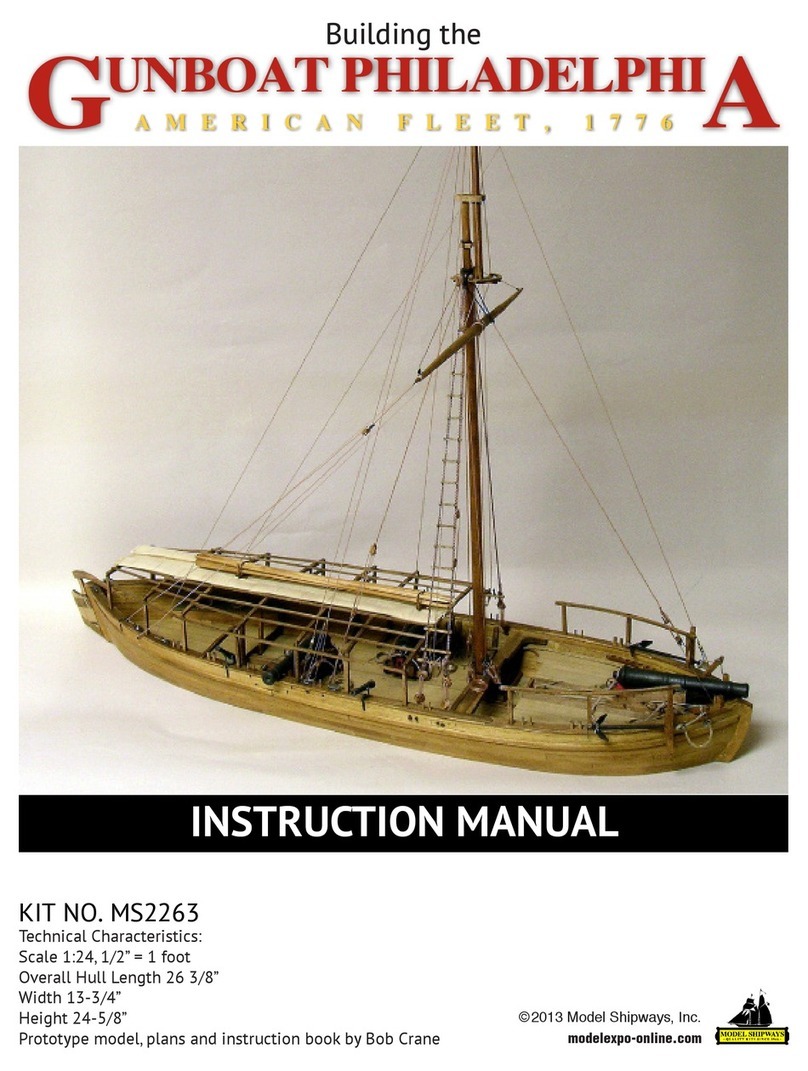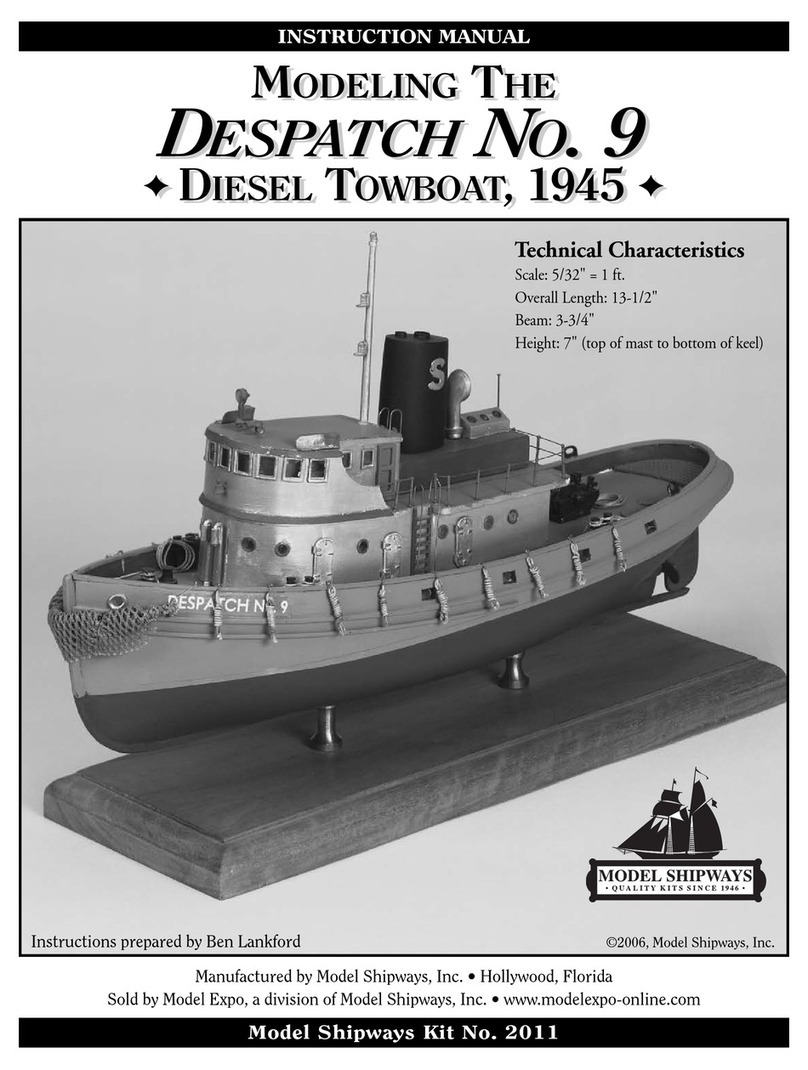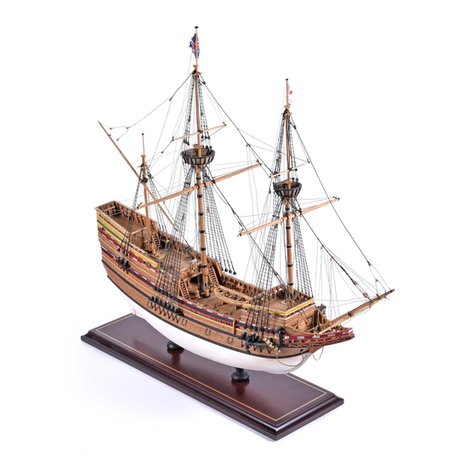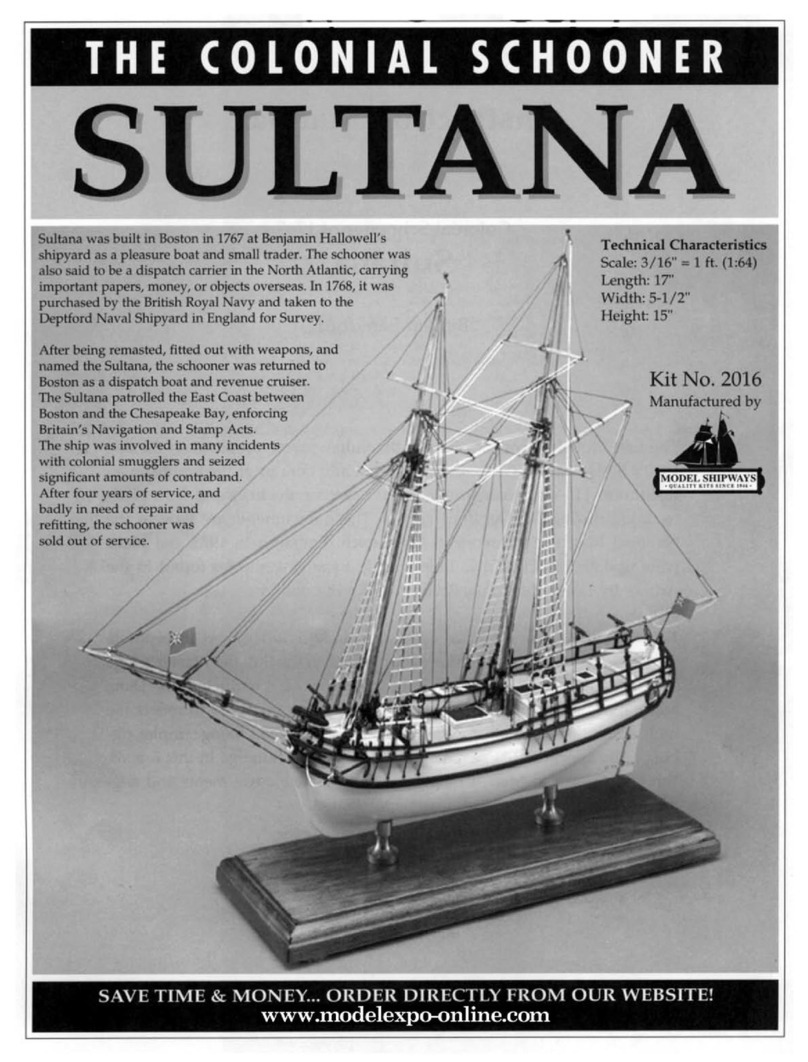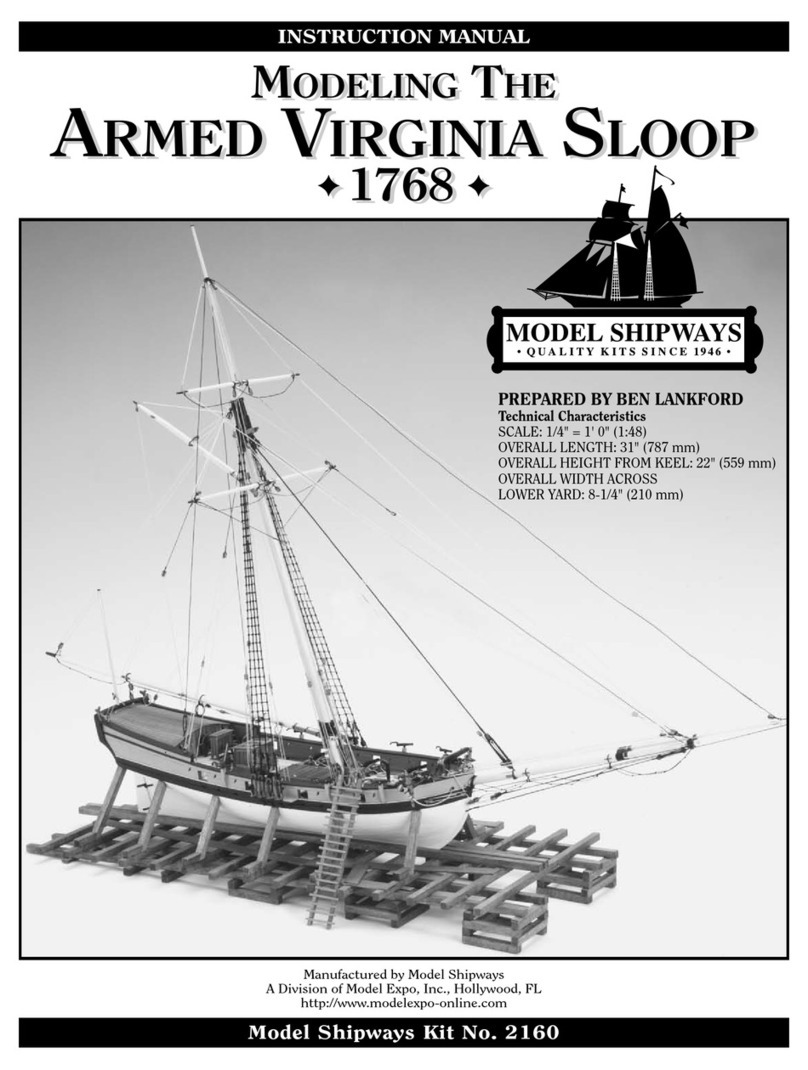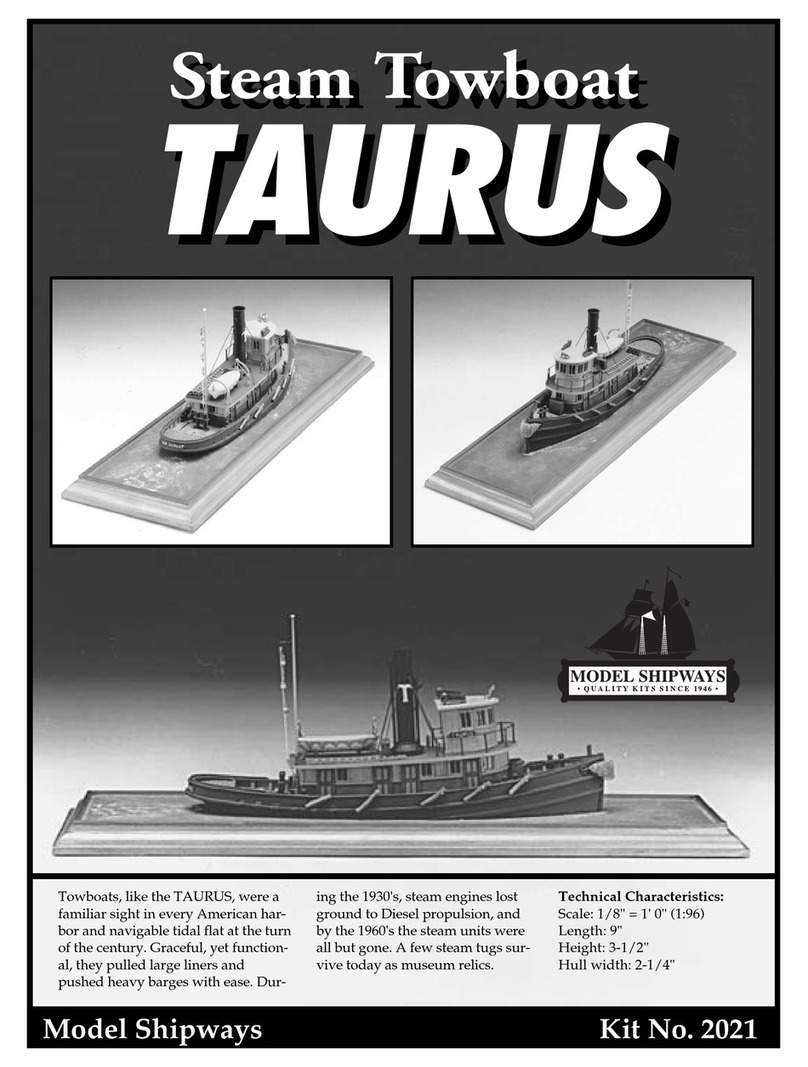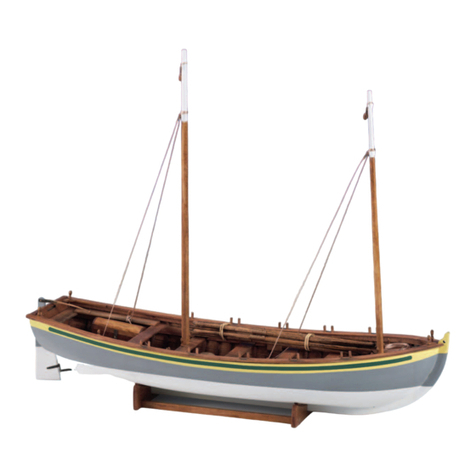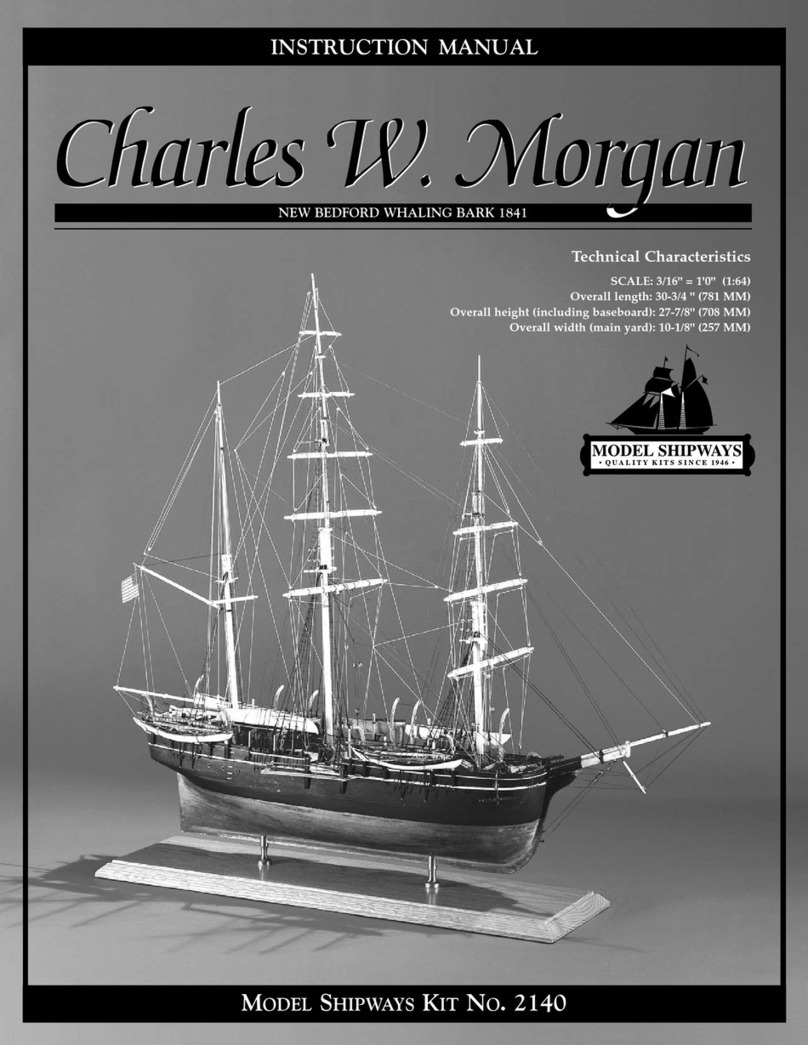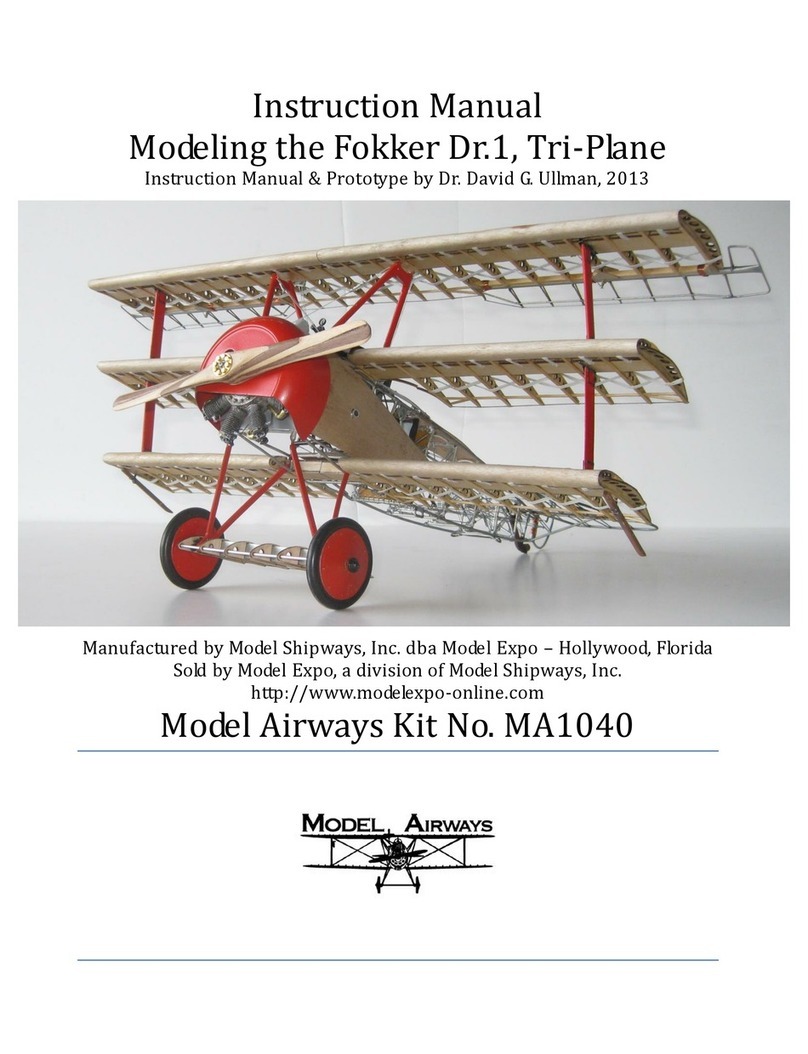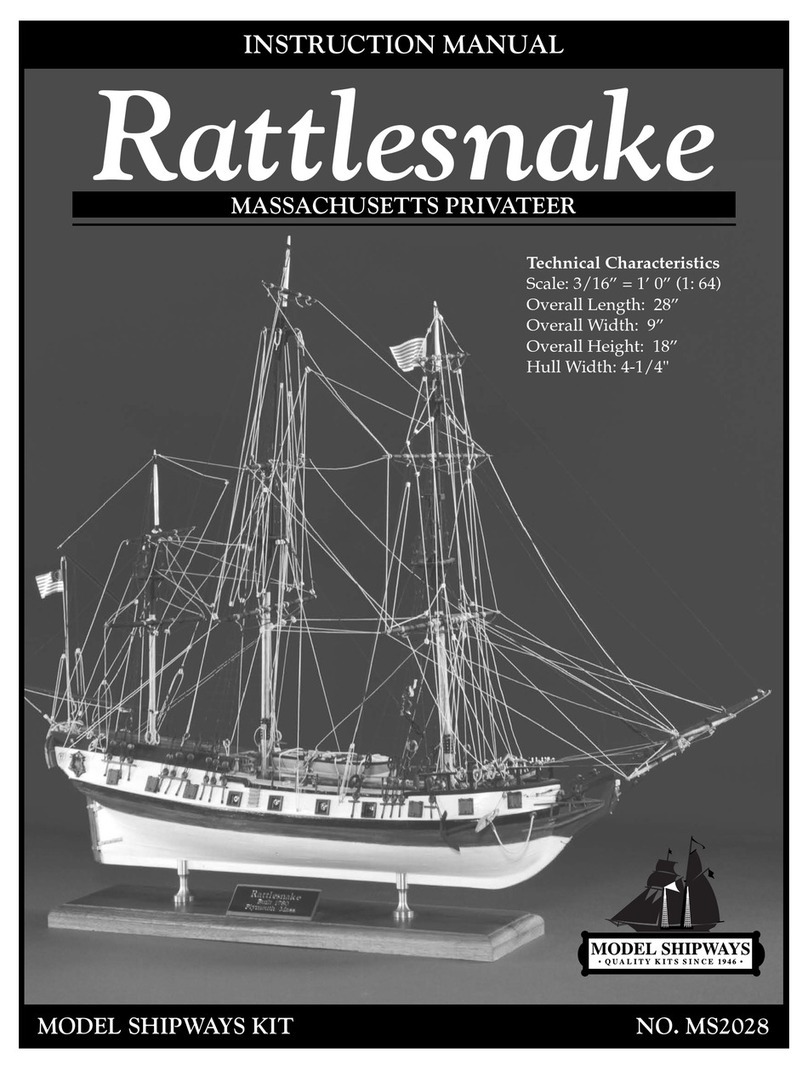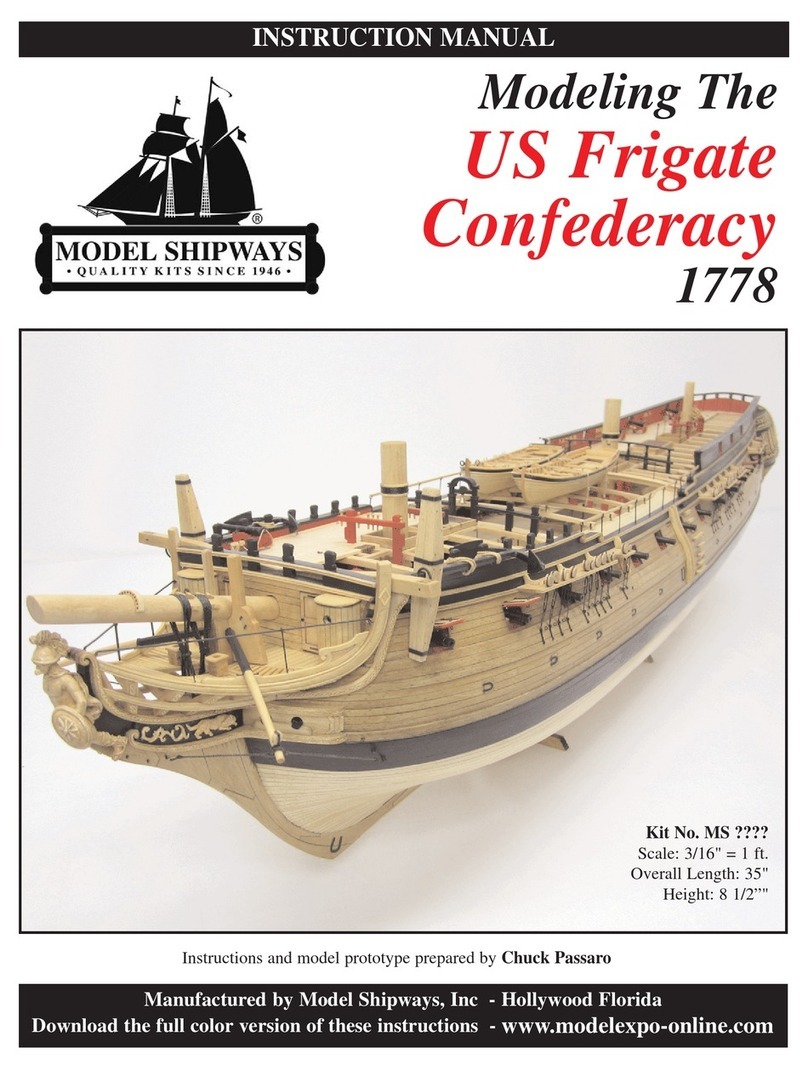
4
Underbody - Metallic Bronze or Bright
Green Trim
Bulwarks - Inside - Ocean Green Trim or
Clipper Pearl Blue
Ironwork - Iron/Cannon Black
Spars - Colonial Pine or English Oak stain.
Pine stain is also recommended for deck
planking.
Other Woodwork & Furniture - Hull
Umber
Paint:
Use a flat-finish paint. Model Shipways line
of acrylic paints are available in the recom-
mended colors. You may also purchase an
already assembled Newsboy paint kit from
Model Shipways web site,
www.modelexpo-online.com.
Primer:
Use a grey primer (one is provided with the
Newsboy paint kit). The grey color will high-
light sanding scratches and other defects
better than white primer. Prime all wood-
work to be painted, and prime all metal
fittings. Lightly sand the primed items.
Use a spackling compound such as Pic-n-
Patch brand to fill any scratches and defects,
then re-prime.
Stains & Finishes:
For natural finished wood, use a protective
coating after staining, such as low-sheen
polyurethane varnish. You can also use an
oil-resin mix like the ones sold by Model
Shipways or Minwax.
For the deck and spars, Model Shipways
stain or Minwax can be used. These are a
combination stain-finish that will provide a
light tone to the wood. The deck plank
edges can be painted prior to installation
with any dark color to simulate caulking.
The staining of all wood parts should be
done before gluing, especially if any CA glue
is used. The stain will not penetrate dried
glue and leave ugly white areas in the finish.
Brushes & Procedures:
Use good quality soft sable or synthetic hair
artist’s brushes. A small pointed brush is
good for details. For the main hull areas, use
a 1/4" to 1/2" flat brush.
Before painting, clean the model with a tack
rag. Apply your paint in smooth and even
strokes, overlapping them as you go. Thin
the paint enough to eliminate brush strokes,
but not run. You will need three or four
coats of the light colors to cover the grey
primer and maybe only two coats of the
dark. Check your finish between coats and
sand and add spackle as necessary to get rid
of any blemishes.
You will be told how to mark the waterline
location in Stage A. At this line, and any-
where else two colors meet, use masking
tape. Electrician’s black plastic tape or any of
the hobby tapes made of plastic film are
ideal. They leave a nice edge and are not
overly sticky. Do not use drafting tape unless
it is Chart-pak brand. The edges are some-
what wrinkled and paint may run under
them. A good trick; seal the edge of masking
tape with a clear flat finish and let dry thor-
oughly. This will really prevent paint from
running under the tape.
STAGE A: SHAPING THE PRE-CARVED HULL
Sanding alone will not shape the hull
enough to precisely match the hull lines.
Some carving is required, especially at the
rail, keel, bow, & stern areas.
1. Using the Templates
For exact carving to hull lines, a template is
required for the hull profile and each of the
stations. You will find a template set printed
on heavy stock paper in the kit. Cut the tem-
plates out carefully with a No. 11 hobby
knife. Do not use scissors! You will want a
nice smooth edge. The profile template is in
two parts. These can be taped together to
form one template. If used separately, make
sure you don’t get a knuckle at the keel. Keep
the keel straight.
2. Carving the Hull
Cut a wooden block from scrap to about 4"
x 1" x 3/4" thick. Screw the block to the
deck so the model can be held in a bench
vise for carving. First, check the accuracy of
the profile and correct it as necessary.
Next, mark the centerline, rabbet lines
(where hull meets keel) and station lines on
the model (Figure A-1). Note that the width
at the keel, stem, and sternpost (rabbet to
rabbet) is 1/8". Keep these areas flat as the
1/8" keel, stem, and sternpost will be glued
on later. Place the station marks on the cen-
ter of the hull bottom and on top of the rails
so the marks won’t be carved off as you
work. Also, add marks for the width of the
hull at each station on top of the rail. Mea-
sure the marks from the centerline of the
model so the marks will be the same port
and starboard.
As shown on the sketch, a good way to start
is to cut a slope at the rail back to the hull
width marks to establish the width of the
hull at the rail for the entire hull length. You
now have a line to carve to as you fit the
templates. Next, start carving approximately
at mid length (maximum beam) and
progress forward, then aft, using chisels and
gouges to cut away excess wood. Avoid carv-
ing against the grain by shifting forward or
aft until you find a spot where you are going
with the grain. Basswood carves easily, so
you probably won’t have much problem with
the grain.
Carve very slowly and take off a little wood
at a time. Fit the templates as you go. Carve
until the template fits reasonably well, then
use sandpaper to obtain the final shape. At
first the templates will not fit very well, espe-
cially at the stern where a fair amount of
wood needs to be carved off. You must com-
pare the template to the hull and visually
decide where to remove wood. Cut a little
off, then re-check the template.
Finally, draw a few horizontal pencil lines
(like waterlines) and the vertical station
lines on the hull. Use these to visually check
the shape of the hull. Hold the hull at vari-
ous angles, and look to see if the pencil
lines are fair (even). If you have any unfair-
ness, dips or bumps, they can usually be
found with this visual check. You can also
use a stiff stick of wood, about 3/32"
square, and lay it on the hull at various
locations. Dips and bumps in the hull will
show up under the stick.
3. Carving the Bulwarks
Make yourself a temporary cradle to secure
the hull while carving. This cradle also will
serve to hold the model for most of the
remaining work. Make the cradle so the
model sits in it with its waterline parallel
to the baseboard and table. The tops of the
cradle should be below the waterline.
Later, when you are ready to paint, attach
a pencil on top of a wooden block and
slide it along the table to mark the loca-
tion of the waterline.
The machine-carved hull has bulwarks
thicker than scale so they won’t break
while inside the kit box. The upper surface
is cut to the underside of the cap rail.
After you carve the outside of the hull, the
bulwarks will be thinner. If more than
about 1/16" thick it will be necessary to
carve the inside of the bulwarks. This is
the most difficult part so work slowly as
you carve (Figure A-2). After carving, sand
the surfaces smooth. If you happen to have
